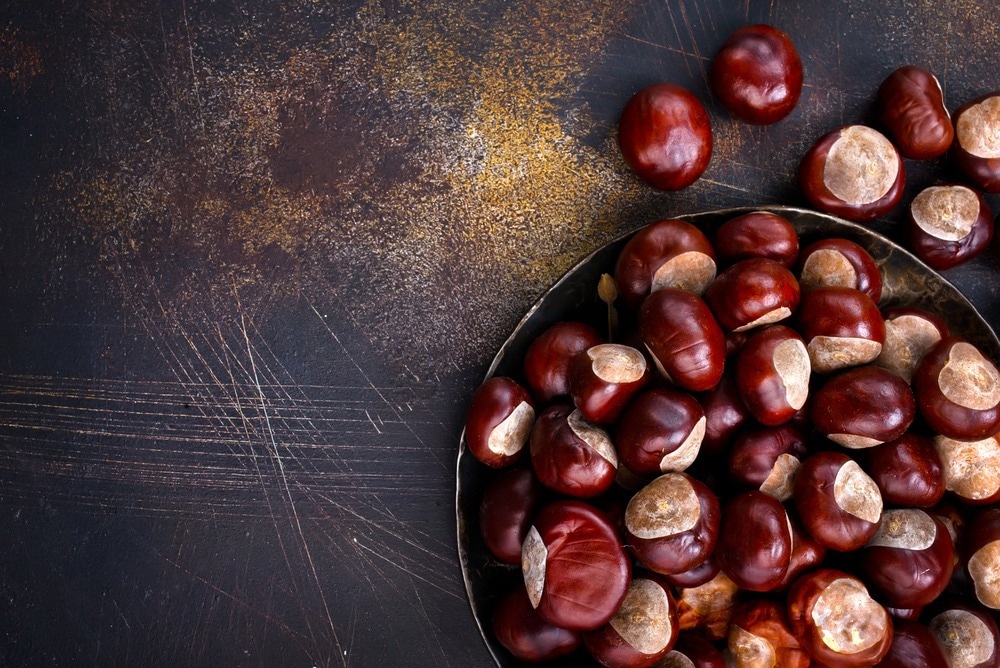Reviewed by Danielle Ellis, B.Sc.Jan 16 2024
The nucleolus organizing region (NOR), a crucial area of the genome, indicates that the chromosomes of Chinese and American chestnuts are not as comparable as previously thought. The discovery, which will be covered in a future Scientific Reports publication, has significant ramifications for anybody hoping to hybridize Chinese and American chestnuts to provide American chestnuts resistance to blight.

Image Credit: Gayvoronskaya_Yana/Shutterstock.com
Nurul Faridi said, “This is an unprecedented finding in the field of plant cytology.” Without using genetic engineering, traditional backcross breeding involves hybridizing two species in an effort to get the best possible combination of features from both. Only in cases where the chromosomes of the two species are compatible may backcross breeding be successful.
People have thought that there is considerable compatibility between the two species since Chinese-American chestnut hybrids are viable. However, the two species of NORs differ significantly, according to the latest study.
Every cell in plants and animals has a NOR. It contains the genetic information needed to create ribosomes, which are the molecular organelles that assemble proteins necessary for life.
Near the end of a specific chromosome's short arm is where the NOR is found. Both species have it, but the Chinese chestnut has more of it than the other because it has much heterochromatin, a form of DNA that makes up around 25% of the chromosome. The researchers were taken aback by the shape and makeup of this DNA, which is transcriptionally dormant, highly condensed, and devoid of gene content.
The American chestnut satellite, on the other hand, is little and seems to be euchromatic. The transcription activity of DNA is present in euchromatic areas. Using a UV filter, a dye that attaches to DNA, and a specialized microscope, Faridi initially observed a small pair of Chinese chestnut chromosomes exhibiting unusually strong fluorescence.
Faridi examined the finding in further detail using a method known as fluorescent in situ hybridization (FISH).
In high-quality FISH images provide unequivocal evidence of this unique DNA arrangement, and these images are not just pictures; they are a testament to the dynamic nature of genetic material.”
Nurul Faridi, Geneticist and Lead Author, USDA Forest Service ‑ Southern Research Station
Faridi has been preparing plant chromosomes for studies since 1991 and has a wealth of knowledge with FISH. For FISH, well-separated chromosomes from enzymatically digested root tips that are primarily devoid of cytoplasmic debris, nuclear membranes, and cell walls are ideal.
Animal cells provide the majority of FISH images since plant cells, especially those of trees, are more difficult to work with. Faridi has discovered that working with chestnuts is significantly more challenging than working with poplar or pine. For more analysis, the researchers will employ a method known as oligonucleotide FISH.
Short, targeted DNA probes obtained from DNA sequencing are used in oligo-FISH. With the complete genomes of Chinese and American chestnuts sequenced, oligo-FISH will enable the researchers to perform in-depth genetic analyses that will identify minute genomic variations. Given that the approach can identify the parent gene of a hybrid, it is particularly valuable for research on hybrids.
Considerable progress has been made in creating American chestnut hybrids that combine the height of the American chestnut with the resilience to the blight of the Chinese chestnut. As a prior Forest Service study has demonstrated, the most advanced hybrids do not now have enough blight resistance for restoration.
The genetics team comprised researchers from Texas A&M University, Pennsylvania State University, the University of Kentucky, and The American Chestnut Foundation, in addition to Faridi and C. Dana Nelson of the USDA Forest Service Southern Research Station.
Source:
Journal reference:
Islam-Faridi, N., et.al., (2024). Cyto-molecular characterization of rDNA and chromatin composition in the NOR-associated satellite in Chestnut (Castanea spp.). Scientific Reports. doi.org/10.1038/s41598-023-45879-6